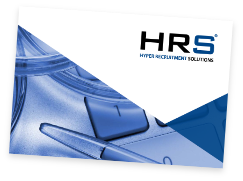What is World Ozone Day 2022 and Why Do We Celebrate It?
The ozone layer is a part of the atmosphere that has high ozone gas concentrations. This gas is made up of three oxygen atoms, but depending on where the ozone layer is, it can either damage or protect life on earth.
For the most part, our ozone layer stays within Earth's stratosphere, acting as a shield and protecting the Earth's surface from the sun's rays. Unfortunately, this has become a major issue over recent decades, as our ozone layer has been steadily and surely depleting.
Due to the reduction in protection from our ozone layer due to climate change, humans are more susceptible to damages caused by the sun's harmful ultraviolet (UV) radiation.
What is the Montreal Protocol?
You may be wondering - what actually is the Montreal protocol? World Ozone Day has been around since 1987 and was proclaimed by the United Nations General Assembly - the same year that the Montreal Protocol was signed.
This is to raise awareness and ultimately aims to reduce the production of substances that are supposed to be responsible for the ozone layer's depletion.
Why is the Montreal Protocol Important?
The Montreal Protocol, formally known as the Montreal Protocol on Substances that Deplete the Ozone Layer, is an international treaty (a formal agreement) that came to fruition in Montreal on September 16th 1987. This treaty aims to reduce the production and consumptions of several types of elements that have the power to deplete the ozone layer.
This treaty was initially signed by 46 countries, but it now currently has over 200 signatories.
What Does the Montreal Protocol Do?
In the early 1970's, chemists Rowland and Molina theorised that chlorofluorocarbon (CFS) compounds combine with solar radiation, and thus decompose in the stratosphere. When this occurs, they release atoms of chlorine and chlorine monoxide, which are able to destroy the ozone molecules.
This was further supported and validated by the discovery of a 'hole' in the ozone shield over Antarctica in 1985. 28 countries met to discuss this discovery, calling for international cooperation in the research of ozone-depleting chemicals (OCDs). From this, the Montreal Protocol was formed.
Has the Ozone Layer Recovered?
Following the Montreal Protocol treaty, it was a bit of a slow start for recovery. The hole over the Antarctic grew in size, and the layer also thinned throughout the 1990's and early 2000's.
Thankfully, the first signs of the ozone layer recovering came to light in 2018 - and scientists concurred that the success of the treaty was exclusively responsible for the decrease of ozone-depleting chemicals within the atmosphere.
The ozone layer is expected to fully heal sometime between 2040 and 2070, and has been classed as an environmental success story by many within the life science industry.
